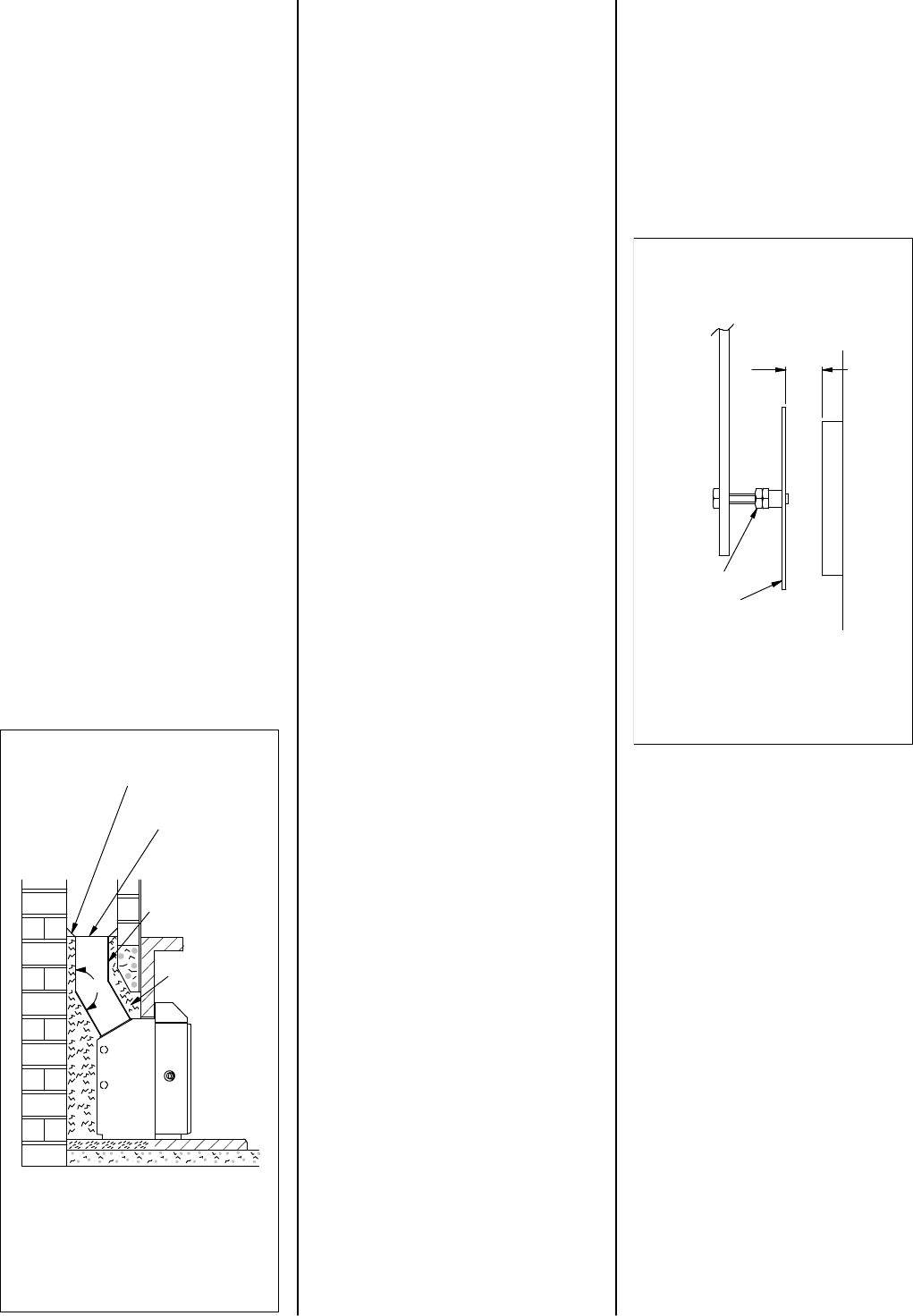
FLUE CONNECTION
AND INFILLING
Make the flue connection with the
special 150°elbow part no.
010/AV12. Please note that this item
is ordered separately from the
appliance. The legs of the elbow may
be cut on site to suit the chimney.
Also note that the legs of the elbow
are different lengths to enable some
situations to be catered for by turning
the elbow around.
The end of the flue pipe must line up
with the centre-line of the chimney,
and must also extend to the point
where the chimney narrows to its
final size. Any large voids must be
filled and flaunched to the flue pipe
to ensure that all soot deposits can be
cleared when the appliance is swept,
and to prevent problems with the
operation of the appliance.
Ensure that the flue pipe is not
obstructed or restricted in any way
and that all joints are well sealed.
Before infilling cover the front of the
appliance to protect it. Ensure that
the flue pipe is central and then fill
the space between the body of the
appliance and the structural
brickwork with vermiculite (e.g.
micafil or similar) concrete. Ensure
that there are no air pockets. The
recommended mix is six volumes of
vermiculite granules to one volume of
Portland cement thoroughly mixed
together. Enough water should be
added so that no more than one or
two drops of water are released when
a handful of the mixture is squeezed.
After filling with vermiculite concrete
flaunch the top of the flue connector
pipe to the chimney with lime
mortar. Ensure that the flue pipe is
well sealed to the chimney.
Make good the hole(s) in the
chimney breast making sure that it is
completely airtight. A typical
installation is shown in Fig. 7.
In most installations it will be
possible to sweep the chimney
through the appliance. If this is not
possible then some alternative means
(such as a soot door), must be
provided.
The free inset method of installation
may be used instead of infilling.
Details are available on request.
THERMOSTAT
Before lighting the fire check the
cold setting distance of the
thermostat.
With the control knob at the
maximum setting the flap should be
18 mm from the air inlet as shown in
Fig. 8. To adjust the distance slacken
the locking nut and adjust as
necessary. When set correctly
re-tighten the locking nut. Ensure
that the flap opens and closes freely
as the knob is turned.
ASSEMBLY
Fit the side panels and hood onto the
appliance. Instructions for this are
enclosed with the panel pack.
Replace any internal parts previously
removed.
PRE LIGHTING
CHECK
Before initial lighting check the
following points:
1. The bottom grate bars must all be
fitted and should move freely and
easily when the riddling mechanism
is operated.
2. The plates round the sides and
back of the grate must be in position
and sitting correctly.
3. The throat plate must be fitted in
the roof of the appliance.
COMMISSIONING
On completion of the installation and
after allowing a suitable period of
time for the fire cement and mortar
to dry out, the fire should be lit and
checked to ensure that smoke and
fumes are taken from the appliance
up the chimney and emitted safely.
Also check all joints and seals.
On completion of the installation and
commissioning please leave the
operating instructions with the
customer and advise on the use of the
appliance.
FREESTANDING KIT
A freestanding kit is available.
Details of dimensions and outputs are
available on request.
Fig. 8. Thermostat Setting
Thermostat Flap
Locking Nut
18mm
150°
0
4
5
1
2
3
Fig. 7. Typical Installation
Vermiculite
Infill
Flaunching
Take Flue Pipe
Up To Narrowest
Part Of Chimney.
Part No. 010/AV12
150° Elbow
Page 9
LA20i 3/99












